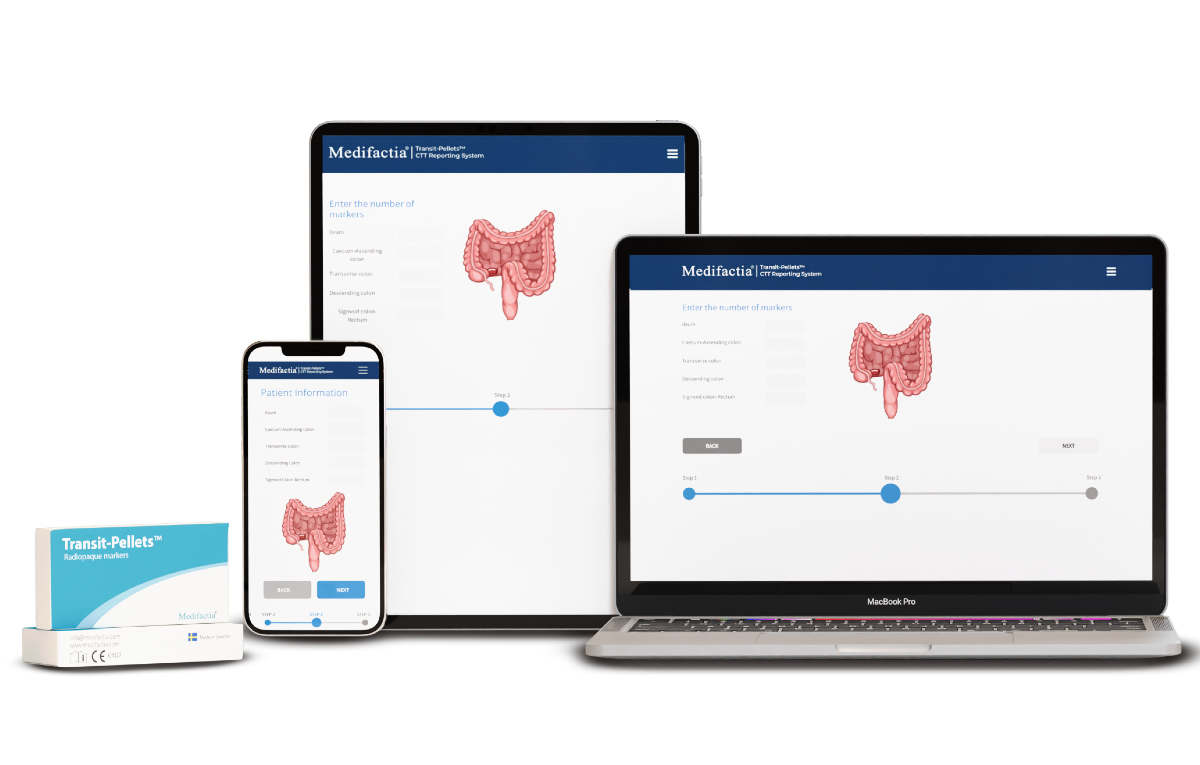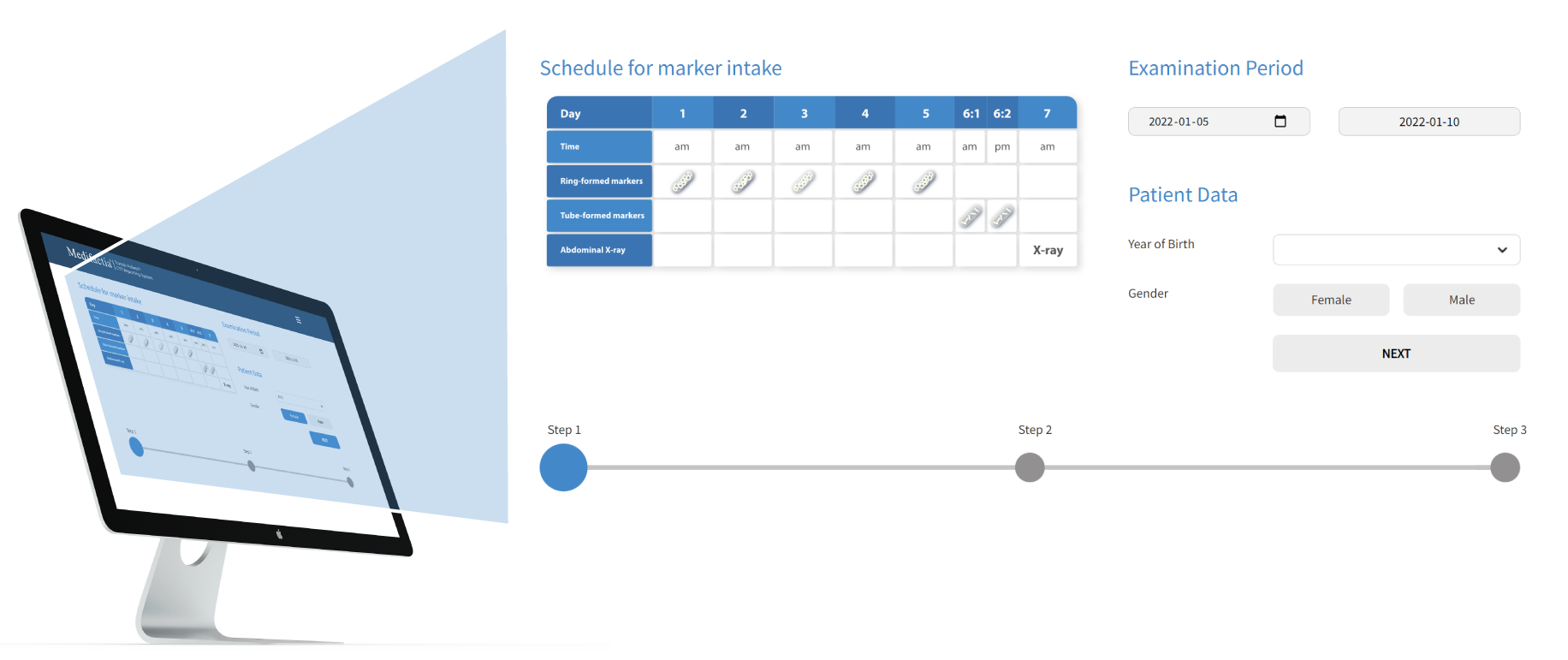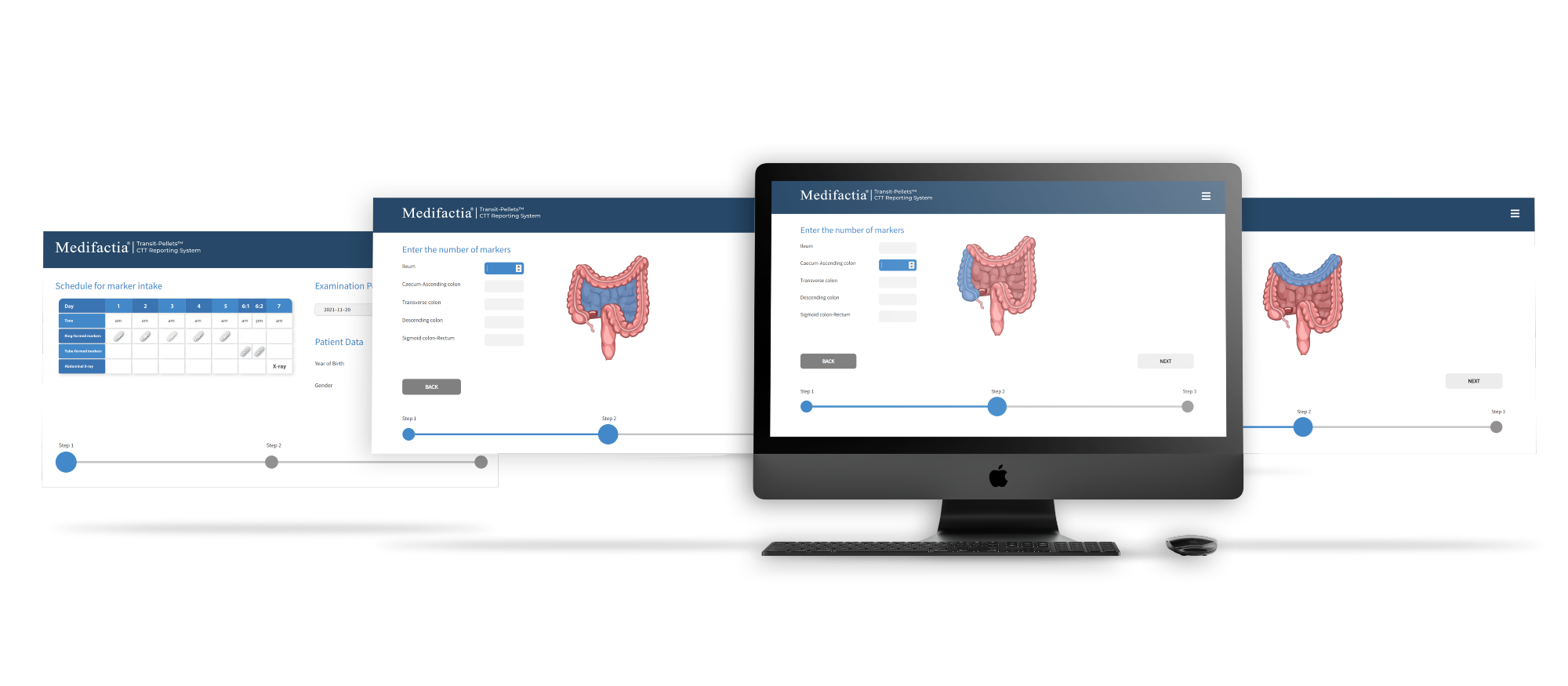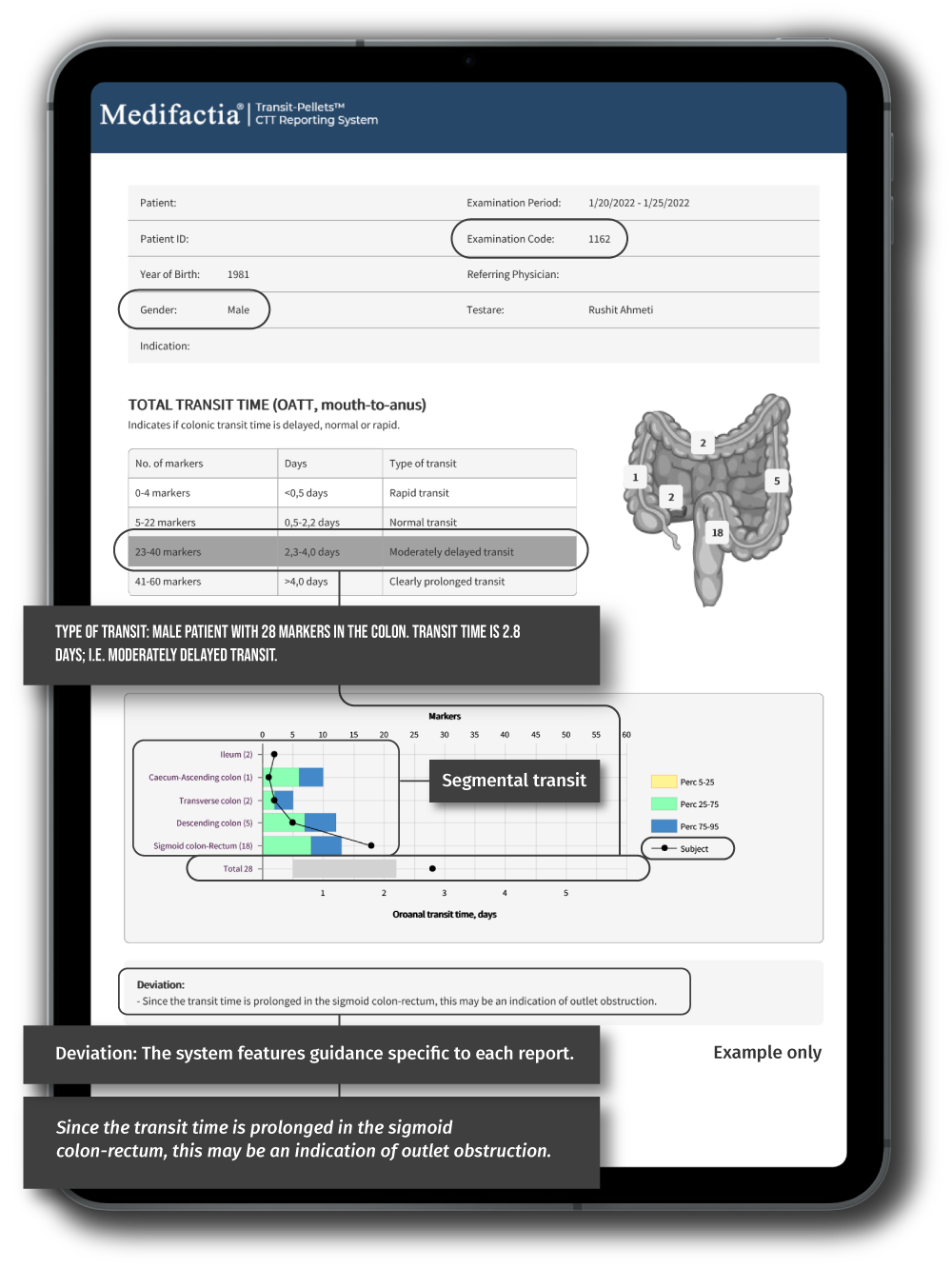MEDIFACTIA TRANSIT-PELLETS®
Take your radiology and clinical practice to the next level
with Medifactia Transit-Pellets® CTT Reporting System!
Medifactia Transit-Pellets® CTT Reporting System offers radiologists and physicians an online solution so that they can quickly determine what needs their attention! Colonic transit time is calculated as the mean oro-anal transit time (OATT). TOTAL and SEGMENTAL transit dysfunction in the colon can be evaluated.
CLINICAL GUIDANCE
A structured assessment using Transit-Pellets radiopaque markers and CTT Reporting System is an important step to plan further investigations, it effects the choice of therapy and long-term prognosis.
STREAMLINED INTERACTIONS
CTT Reporting System supports reporting unfamiliar and complex cases. The consistent structure ensure that your reports continue to be consistently high and improves communication with referring physicians and patients.
INTEGRATED WORKFLOW
Structured reporting is a viable option in clinical routine and CTT Reporting System is there to support you in your work! No matter whether you currently work with free-text dictations or type your reports, we are convinced that you are going to be faster with CTT Reporting System.
Sign up for free
And make the most out of your workflow!
Our browser based, vendor-neutral system does not require any installation. You can generate the report directly at your workstation without entering any sensitive patient data. Reports are never shared or publicly accessible.
Go to https://ctt.medifactia.com/ and log in to your account. Once you are logged in, you will be able to upload data or retrieve previously uploaded data.
The online version of CTT Reporting System does not ask for patient-specific data. Therefor, all structured reports filled in online are anonymized and a unique code is generated to each patient and result.
In collaboration with a great set of partners, we are able to integrate CTT Reporting System into your workflow and make structured reporting a virtually seamless experience!
Segmental and total colonic transit time is calculated according to the distribution of the markers in the different segments of the bowel. The transit time is equal to the total number of retained markers divided by the daily dose, which results in a colonic transit time value that is compared with normal values.
The severity of the transit problem is quantifiable by the transit test and the result may be an important variable; it may facilitate the decision on further examination procedures, it effects the choice of therapy and long-term prognosis.
Total transit time (OATT, mouth-to-anus)*: Indicates if colonic transit time is DELAYED, NORMAL or RAPID
Segmental transit time**: Provides information on the type of the delay, i.e. distal or left-sided
Segmental transit time is of interest to evaluate, particularly in patients with delayed transit, because it gives an indication which segment is abnormal; is the function defective in the recto-sigmoid area or is it more widespread in the left colon, or even affecting all parts of colon such as in colonic inertia.
* Colonic transit time (OATT); reference values: Normal transit time corresponds to the range from percentile 5 to percentile 95 in the control material. Reference values based on 199 subjects: 1) Abrahamsson et al, Scand J gastroenterol 1988 Suppl 152:72-80; 2) Sadik et al, Scand J Gastroenterol 2003, 38:36-42; 3) Törnblom et al, data on file, Gastrointest Lab, Sahlgrenska University Hospital, Sweden.
** Segmental transit time; upper reference values: Segmental transit times: Abrahamsson et al, Scand J Gastroenterol 1988 Suppl 152:72-80. Percentile 95 calculated per segment in healthy subjects.
Reference values based on 199 subjects; 114 women and 85 men











